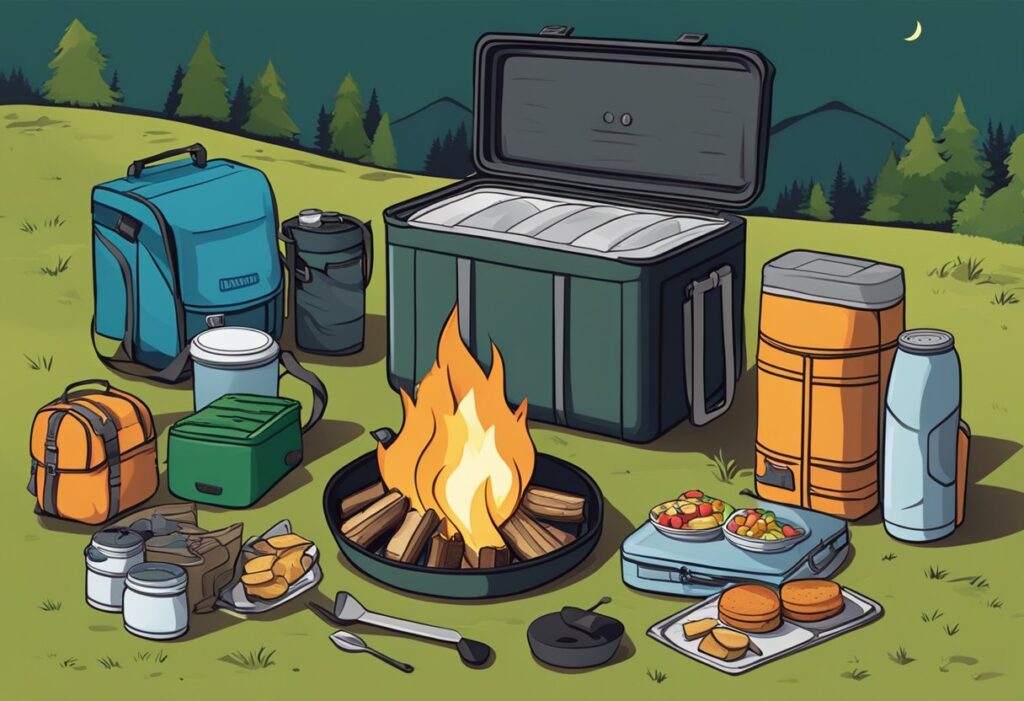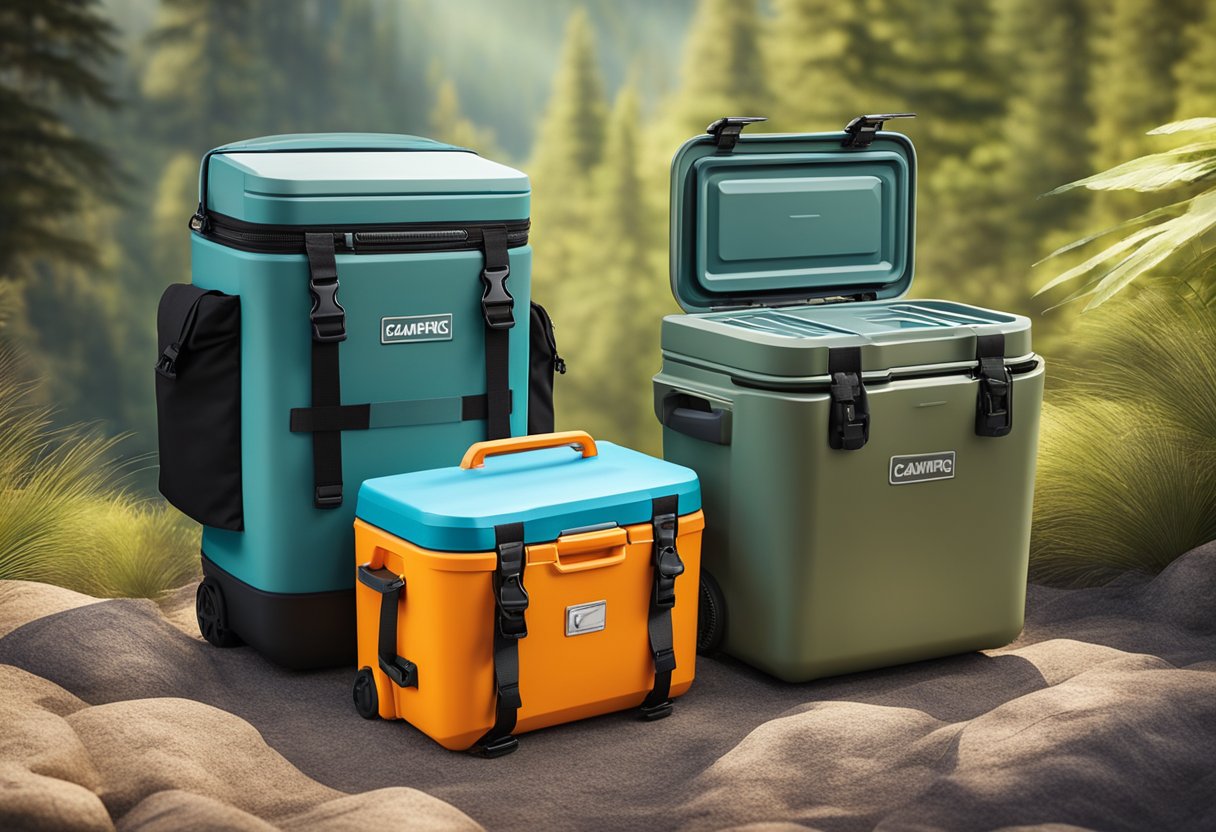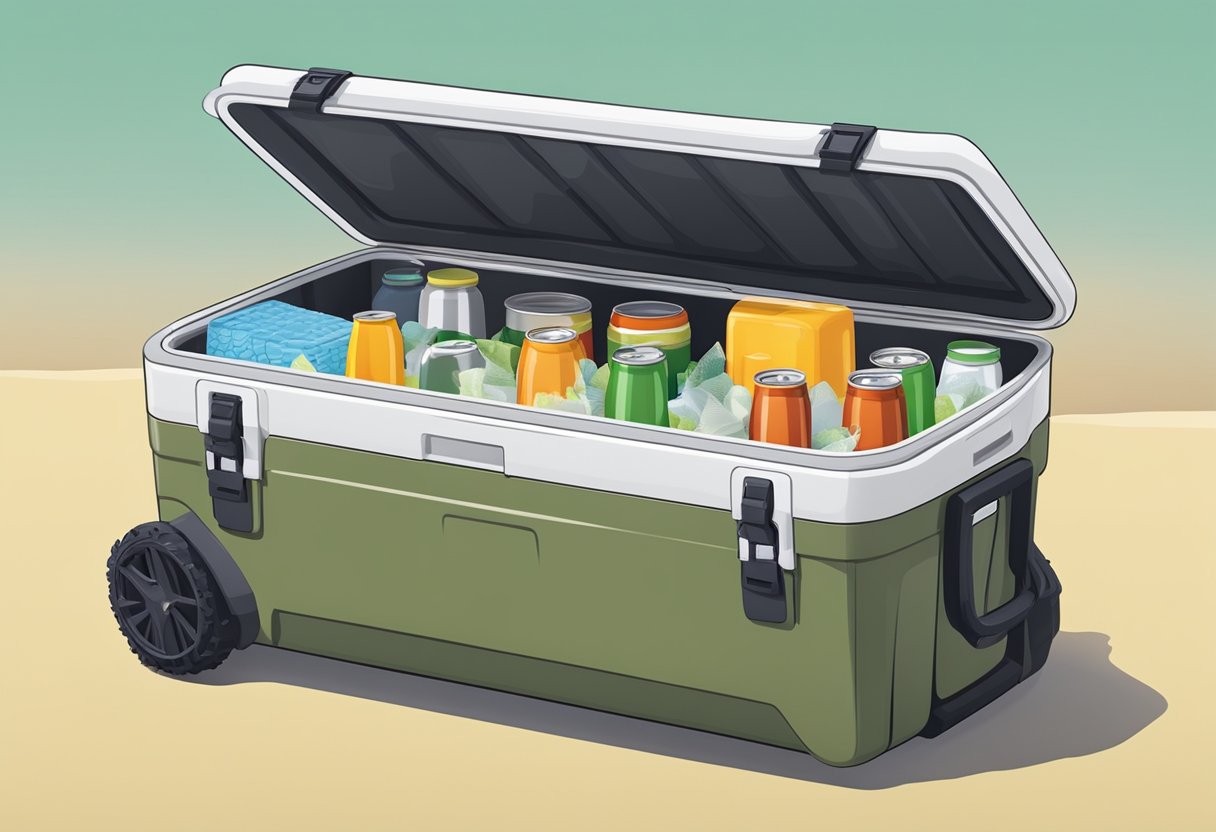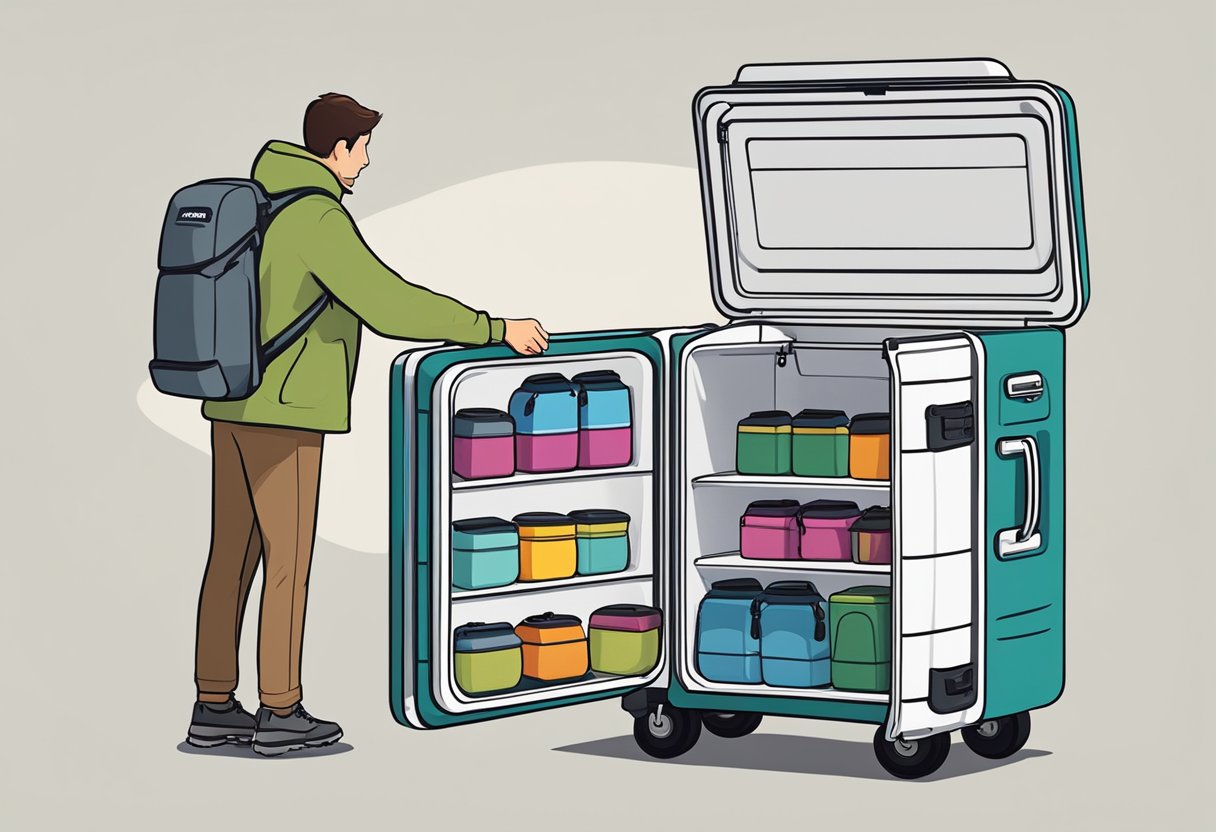When it comes to camping, having the right gear is essential for a successful trip. One of the most important items to consider is the cooler. A cooler for camping is not only responsible for keeping your food and drinks cold, but it also needs to be durable and portable. But what size cooler for camping should you get?

The answer to this question depends on a few factors. First and foremost, you need to consider the length of your camping trip. For a day trip, a small cooler may suffice, but for a weekend getaway or longer, a larger cooler will be necessary. Additionally, the number of people on the trip will also impact the size of the cooler needed. A solo camper will require a smaller cooler than a family or group of friends.
Choosing the right size cooler for camping is crucial for ensuring that your food stays fresh and your drinks stay cold. By considering the length of your trip and the number of people in your group, you can determine the appropriate size cooler to bring along on your camping adventure.
Determining the Right Cooler Size
When planning a camping trip, one of the most important things to consider is what size cooler you will need. Choosing the right size cooler is essential to keep your food and drinks cool and fresh throughout your trip. In this section, we will discuss how to determine the right cooler size for your camping trip.
Assessing Your Group Size and Trip Duration
The first step in determining the right cooler size is to assess your group size and trip duration. If you are going on a weekend camping trip with a small group of people, you may only need a cooler with a capacity of 20-30 quarts. However, if you are going on a longer trip with a larger group of people, you will need a larger cooler with a capacity of 40-60 quarts or more.
Understanding Cooler Capacity and Dimensions
When choosing a cooler, it is important to understand its capacity and dimensions. Cooler capacity is measured in quarts and refers to the amount of space available inside the cooler. Cooler dimensions refer to the length, width, and height of the cooler. It is important to consider both the capacity and dimensions of the cooler to ensure that it fits your needs.
One way to determine the right cooler size is to calculate the amount of food and drinks you will need for your trip. A general rule of thumb is to plan for one pound of ice per quart of cooler capacity. For example, if you have a 40-quart cooler, you will need 40 pounds of ice to keep your food and drinks cold.
In conclusion, when determining the right cooler size for your camping trip, it is important to consider your group size, trip duration, and the amount of food and drinks you will need. By understanding cooler capacity and dimensions, you can choose a cooler that fits your needs and keeps your food and drinks cool and fresh throughout your trip.
Types of Coolers for Camping

When it comes to camping coolers, there are a few different types to choose from. Each type offers unique features and benefits, so it’s important to consider your specific needs before making a purchase. Below are the two main types of camping coolers:
Hard Coolers vs. Soft Coolers
Hard coolers are the classic, durable coolers that most people are familiar with. They are made of hard plastic and are designed to keep food and drinks cold for an extended period. Hard coolers come in a variety of sizes, ranging from small personal coolers to large family-sized coolers. They are perfect for camping trips where you need to keep food and drinks cold for a few days.
Soft coolers, on the other hand, are made of soft materials like nylon or polyester. They are lightweight and easy to carry, making them perfect for day trips or short camping trips. Soft coolers are not as durable as hard coolers, but they are more portable and easier to store. They come in a variety of sizes, from small lunchbox-sized coolers to larger backpack coolers.
Specialized Coolers: Electric and Wheeled Options
In addition to hard and soft coolers, there are also specialized coolers available for camping. Electric coolers are perfect for those who want to keep their food and drinks cold without the need for ice. They are powered by a battery or a car’s electrical system and can keep food and drinks cold for an extended period. Electric coolers come in a variety of sizes, from small personal coolers to larger family-sized coolers.
Wheeled coolers are perfect for those who need to transport their cooler over long distances. They are designed with wheels and a handle, making them easy to move around. Wheeled coolers come in a variety of sizes, from small personal coolers to large family-sized coolers. They are perfect for camping trips where you need to transport your cooler from your car to your campsite.
When choosing a camping cooler, it’s important to consider features like portability, durability, and size. Hard coolers are great for extended camping trips, while soft coolers are perfect for day trips or short camping trips. Specialized coolers like electric and wheeled coolers offer unique features that can make your camping trip more enjoyable.
Key Features to Consider

When choosing a cooler for camping, there are several key features that should be considered to ensure that the cooler will meet your needs. These features include insulation and ice retention, cooler durability and material, and additional features for convenience.
Insulation and Ice Retention
One of the most important features to consider when choosing a cooler for camping is insulation and ice retention. A well-insulated cooler will help keep your food and drinks cold for longer periods of time, which is especially important when camping in hot weather.
The thickness of the insulation, as well as the type of material used, can greatly affect the cooler’s ability to retain ice. Some coolers are also designed with special features, such as extra insulation in the lid or walls, to improve ice retention.
Cooler Durability and Material
Another important feature to consider is the durability and material of the cooler. A high-quality cooler made from durable materials will be able to withstand the wear and tear of camping, as well as protect your food and drinks from damage.
Common materials used for coolers include plastic, metal, and fabric. Each material has its own advantages and disadvantages, so it is important to choose a material that is best suited for your needs.
Additional Features for Convenience
Finally, it is important to consider any additional features that may be useful for convenience. Some coolers come with features such as built-in cup holders, bottle openers, and even wheels for easy transport.
Other features to consider include whether the cooler is watertight, has a drain plug for easy cleaning, and whether it comes with any additional accessories such as ice packs or dividers.
By considering these key features when choosing a cooler for camping, you can ensure that you select a cooler that will meet your needs and keep your food and drinks cold for the duration of your trip.
Maximizing Cooler Efficiency
A camping cooler is an essential item for keeping food fresh and safe at the right temperature during outdoor activities like camping, picnics, or beach outings. However, the efficiency of a cooler depends on how well it is packed, maintained, and cleaned. Here are some tips for maximizing cooler efficiency:
Packing Strategies for Optimal Cooling
One of the most important things to consider when packing a cooler is the order of items. The first layer should always be ice or ice packs. This helps to keep the temperature low and maintain the freshness of the food. It is recommended to use block ice instead of ice cubes as it lasts longer.
When packing food items, it is essential to keep them at safe temperatures. Raw meat and seafood should be kept in separate containers and placed at the bottom of the cooler. Cooked food should be stored in a separate container and placed on top of the raw food. This helps to prevent cross-contamination and keep the food fresh.
Another great tip for packing a cooler is to use frozen water bottles instead of ice. This helps to keep the cooler cool and provides drinking water as the ice melts.
Maintenance and Cleaning for Longevity
Maintaining and cleaning a cooler is essential for its longevity and optimal performance. After each use, it is recommended to clean the cooler with warm soapy water and rinse thoroughly. This helps to remove any food residue and prevent bacterial growth.
It is also important to store the cooler in a cool and dry place when not in use. This helps to prevent mold and mildew growth and prolongs the life of the cooler.
In addition to cleaning, it is recommended to check the cooler for any damages before each use. This includes checking the hinges, latches, and seals for any cracks or leaks. If any damages are found, they should be repaired or replaced before using the cooler.
By following these tips for maximizing cooler efficiency, campers can ensure that their food stays fresh and safe at the right temperature during their outdoor activities.
Selecting the Perfect Cooler Within Your Budget

When it comes to choosing the right cooler for camping, it’s important to consider both the size and the price. The right cooler should be large enough to hold all of your food and drinks while also fitting within your budget. Here are some tips for selecting the perfect cooler within your budget.
Price Range and Cost-Effectiveness
The first thing to consider when selecting a cooler is your budget. Coolers come in a wide range of prices, from budget-friendly options to high-end models. It’s important to find a cooler that fits within your budget while also offering the features and quality you need.
One way to save money on a cooler is to consider a budget-friendly option. While these coolers may not have all the bells and whistles of a high-end model, they can still keep your food and drinks cold for several days. Some popular budget-friendly options include the Coleman Steel Belted Cooler and the Igloo MaxCold Cooler.
If you’re willing to spend a bit more, there are also mid-range coolers that offer a good balance of features and affordability. Some popular mid-range options include the Yeti Hopper BackFlip and the RovR RollR.
Comparing Popular Cooler Brands and Models
When selecting a cooler, it’s also important to compare popular brands and models. Some of the most popular cooler brands include Yeti, RovR, and Coleman. Each brand offers a range of models with different features and price points.
For example, the Yeti Tundra is a high-end cooler that offers superior insulation and durability. It’s perfect for long camping trips where you need to keep your food and drinks cold for several days. However, it’s also one of the most expensive coolers on the market.
On the other hand, the RovR RollR is a mid-range cooler that offers a good balance of features and affordability. It has a built-in wagon system that makes it easy to transport, and it can keep your food and drinks cold for several days. It’s also more affordable than many other mid-range coolers.
Ultimately, the right cooler for you will depend on your budget and your specific needs. By considering both price and features, you can find the perfect cooler for your next camping trip.